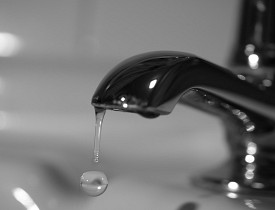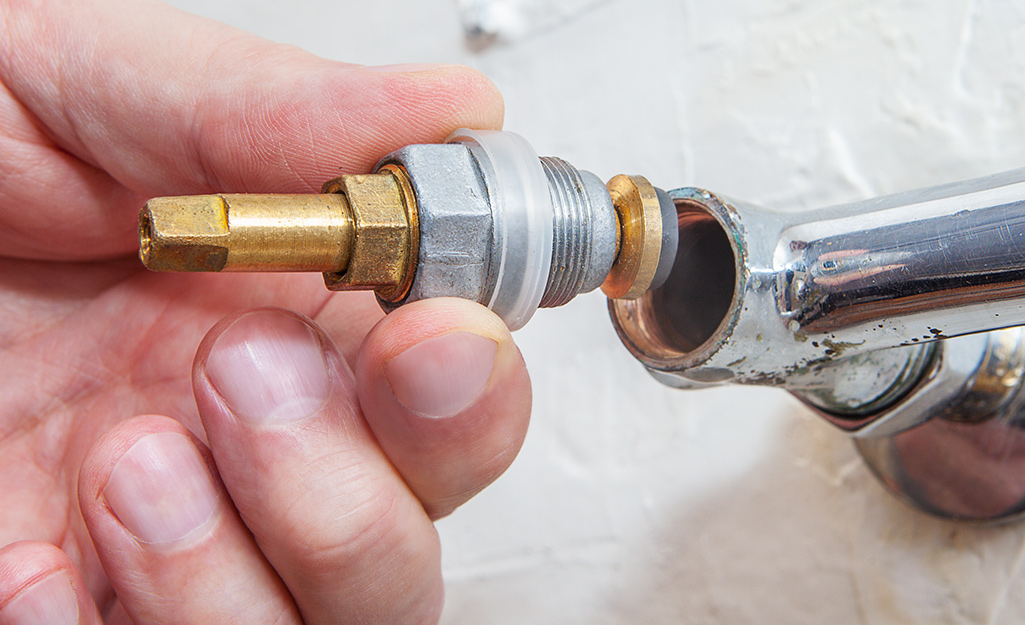Uncovering the Significance of Correcting a Malfunctioning Faucet
Uncovering the Significance of Correcting a Malfunctioning Faucet
Blog Article
Nearly everybody may have their own unique opinion when it comes to Should I Repair or Replace a Leaky Faucet?.

Trickling taps could appear like a small inconvenience, yet their influence exceeds just the annoyance of the audio. From drainage to incurring unneeded monetary prices and health and wellness risks, overlooking a leaking faucet can lead to different effects. In this short article, we'll look into why it's essential to resolve this usual household concern without delay and successfully.
Waste of Water
Environmental Effect
Dripping taps contribute significantly to water waste. According to the Epa (EPA), a single faucet leaking at one drip per secondly can lose greater than 3,000 gallons of water annually. This not only pressures water resources yet likewise impacts communities and wild animals depending on them.
Step-by-Step Overview to Dealing With a Dripping Tap
Devices Called for
Before attempting to take care of a dripping tap, collect the required devices, including an adjustable wrench, screwdrivers, substitute parts (such as washers or cartridges), and plumber's tape.
Usual Faucet Issues and Their Solutions
Determine the sort of tap and the certain concern causing the drip. Common problems consist of worn-out washing machines, rusty shutoff seats, or malfunctioning O-rings. Describe maker directions or online tutorials for step-by-step support on repair services.
Financial Expenses
Enhanced Water Bills
Past the ecological influence, dripping faucets can blow up water costs significantly. The gathered wastage gradually converts right into greater utility expenses, which might have been prevented with prompt fixings.
Potential Building Damage
Moreover, prolonged dripping can lead to damage to components and surfaces surrounding the faucet. Water accumulation can cause discoloration, deterioration, and also structural problems if left ignored, leading to extra repair costs.
Wellness Worries
Mold And Mildew and Mold Growth
The consistent visibility of dampness from a trickling tap produces an excellent setting for mold and mildew development. These fungi not just jeopardize indoor air top quality yet additionally position health dangers, specifically for individuals with breathing conditions or allergies.
Waterborne Diseases
Stationary water in leaking taps can end up being a breeding ground for germs and other microorganisms, increasing the threat of waterborne illness. Pollutants such as Legionella bacteria thrive in stationary water, possibly causing serious illnesses when consumed or inhaled.
DIY vs. Expert Repair service
Pros and Cons of DIY Repair Work
While some may attempt to deal with a trickling tap themselves, DIY repair services include their very own collection of challenges. Without correct expertise and devices, DIY attempts can intensify the problem or lead to insufficient repair work, extending the problem.
Advantages of Employing a Professional Plumber
Employing a professional plumber makes sure that the underlying cause of the dripping faucet is resolved effectively. Plumbing technicians have the knowledge and devices to identify and repair faucet issues efficiently, saving time and minimizing the risk of more damages.
Ecological Obligation
Private Contribution to Preservation
Taking duty for taking care of leaking faucets straightens with more comprehensive efforts toward water preservation and environmental sustainability. Every person's activities collectively make a substantial effect on preserving priceless resources.
Lasting Living Practices
By prioritizing prompt fixings and embracing water-saving behaviors, individuals add to sustainable living methods that profit both present and future generations.
Safety nets
Normal Upkeep Tips
To stop trickling faucets, do regular maintenance such as cleaning aerators, inspecting for leakages, and replacing worn-out components without delay. Additionally, think about mounting water-saving tools or updating to much more effective components.
Value of Prompt Services
Addressing dripping taps as quickly as they're discovered protects against further water wastage and potential damage, inevitably conserving both water and money in the future.
Influence On Home Value
Assumption of Well-Maintained Building
Maintaining a home in good condition, including attending to upkeep issues like leaking taps, improves its viewed worth and worth among possible purchasers or occupants.
Impact on Resale Value
Features with well-kept plumbing components, including taps, command higher resale worths in the realty market. Addressing leaking faucets can add to a favorable perception throughout home inspections and settlements.
Verdict
Attending to a dripping faucet exceeds plain convenience; it's a vital action towards preserving water, lowering financial costs, and protecting health and wellness and residential property. Whether via do it yourself fixings or specialist support, acting to repair dripping faucets is a tiny yet impactful method to promote liable stewardship of sources and contribute to a much healthier, a lot more sustainable future.
How to Fix a Dripping or Leaky Faucet
A leaking faucet is one of the most common problems that homeowners encounter, but it being commonplace doesn’t make it any less annoying. The constant drip drip drip of a leaking bathtub faucet, showerhead, or sink tap can disturb your home’s serenity. Left neglected, a dripping faucet can also result in higher water bills and discoloration or mold growth in your sink or plumbing fixtures.
Fortunately, you don’t have to be a trained plumber to know how to stop a dripping faucet. With some basic tools, replacement parts, and a little patience, leaky faucet repair is a breeze. In this article, we’ll explain what causes dripping faucets and how you can fix them.
What Causes a Leaking Faucet?
Kitchen and bathroom faucets come in all manner of designs, but most involve some combination of valves, O-rings, seals, and washers. The O-ring is usually the weakest link, but any one of these pieces can wear down over time. Heat, moisture, temperature fluctuations, minerals, mold, and movement can contribute to warping and corrosion, breaking the watertight seal. This just comes with the territory of being a homeowner. Everything is always subject to wear and tear, and some component parts of your appliances and fixtures need to be replaced on occasion. At least replacement O-rings are cheap!
More rarely, dripping faucets can be a symptom of excessively high water pressure. Were this the case in your home, you would probably notice that the leak is not isolated to one faucet. Water pressure issues are harder to resolve on your own. We recommend contacting a professional plumber if you suspect your water pressure is too high.
How to Fix a Dripping Faucet
Pipe wrench or monkey wrench Allen wrench set Screwdrivers Old towel or rag Shut off the water.
Before you do anything, you need to turn off the water to keep from drenching your kitchen or bathroom. You should find a valve under the sink and against the wall. Once you’ve turned this valve, try turning the faucet on to confirm that the water source has been cut off.
If you can’t locate your local valve for the faucet you’re working on, you can always shut off the water to the house at the main valve. Of course, this will prohibit anyone from using the sinks, showers, or toilets while you’re working on the faucet that’s giving you trouble.
Plug or block the drain.
You’ll be disassembling the faucet and removing some small bits of hardware. Plug the drain with a stopper or rag to avoid the possibility of a small screw falling into your P-trap.
Take apart the faucet assembly.
There are several varieties of kitchen and bathroom faucets, each with its own manner of assembly. For detailed instructions on how to disassemble your faucet, you can refer to the fixture’s manual or contact the manufacturer. If you know whether you have a ball, disc, cartridge, or compression faucet, you can find detailed schematics online.
In general, you need to begin by removing the faucet handles. You might notice a small screw that you’ll need to remove with a screwdriver or Allen wrench. If you don’t see any visible securing hardware, it’s likely hidden under a decorative cap that can be unscrewed or popped off with flathead screwdriver.
Remove each piece methodically, consulting a schematic when necessary. Take notes or arrange the pieces in such a way to make it easier to correctly reassemble the faucet later.
Remove the cartridge.
Once you’ve removed the handles and securing hardware, you should be able to remove the valve cartridge or stem. Some cartridges will slide right out. Other faucet models will require you to loosen a nut with a pipe wrench before you can remove the valve stem.
Examine the exposed hardware.
With the cartridge or stem removed, inspect the component parts. Check the rubber O-rings for wear and tear. Also examine the seat washer for corrosion or other damage. These pieces are usually the responsible parties for a dripping faucet, but it’s worth inspecting the other component parts while you have the faucet disassembled.
Find replacement parts.
Once you’ve identified which faucet component has failed, find an identical replacement. Your local hardware store should have O-rings, seat washers, and other standard components in stock. If you have a luxury or uncommon faucet, you may have to contact the manufacturer for a replacement part.
It’s a good idea to take your old parts with you to the hardware store so you can compare them with the store’s inventory and be sure you’re purchasing the correct replacement.
Reassemble the faucet.
With your new parts in hand, reconstruct the faucet and handles. Don’t be tempted to overtighten screws or nuts. You might think this could create a better seal, but it can instead damage or bend a delicate part of the assembly and create a new problem for you.
Turn on the water and test the faucet.
The only thing left to do is test your work. Unplug the sink, turn the water back on, and try the faucet. Congratulate yourself on a job well done!
https://www.libertyhomeguard.com/how-to-fix-a-dripping-or-leaky-faucet/

As a serious person who reads on Why Is It Important To Fix Your Leaking Tap/Faucet?, I think sharing that chunk was worthwhile. Do you know another individual who is excited by Should I Repair or Replace a Leaky Faucet?? Be sure promote it. Many thanks for taking the time to read it.
Report this page